"Graffiti" Belonging to Bygone Times
Visitors to Postojna Cave loved leaving their signatures. At first, the signatures were written on the cave walls, during the first official tourist tour of Postojna Cave 200 years ago, however, the cave management introduced a special visitors' book. Two hundred years later, the book is back where it belongs and is for the first time ever on view at Postojna Cave's Expo Cave Karst.
The First Visitors' Book
The once fresh leather cover barely holds together a total of 430 yellowed leaves of paper, which tell the stories of more than 2,900 visitors that added their signatures to Postojna Cave's first visitors’ book over a period of fifteen years. On 17 August 1819, the cave's most beautiful parts were toured by the very first visitor, the Austrian heir to the throne Ferdinand I. Visitors from all over the world followed his lead, noting down their respective names and dates of visit with great care and exquisite penmanship. On page eight of the fragile book, the most noteworthy signatures are those added by a group of visitors who went on an evening tour of Postojna Cave on 22 May 1820, including Andrej Smole, an important Slovenian patron of the arts and a friend of the great Slovenian poet, France Prešeren.
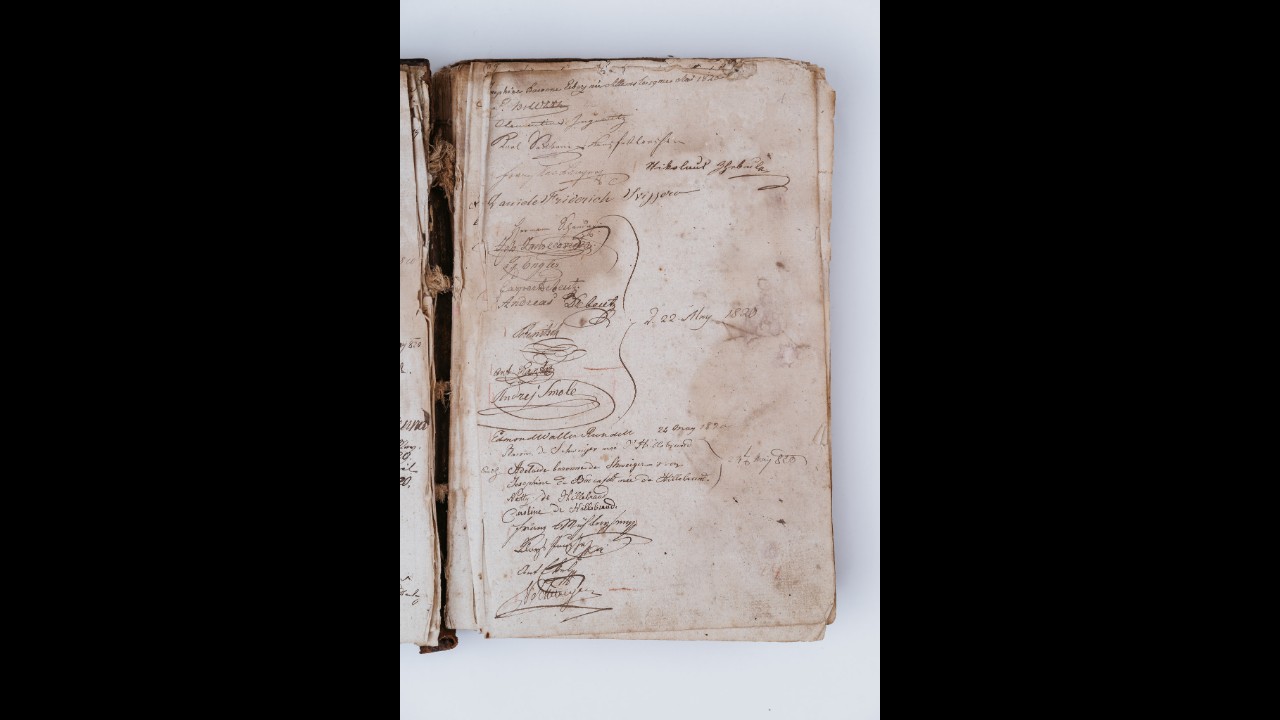

The Romantic Era
The times of Postojna Cave's first visitors' book coincided with the Romantic Era, which was characterised by a strong interest in nature. Hence, many of the visitors who signed the book were naturalists, such as Alois Schaffenrath and Franz Höhenwarth, who authored the first guide to Postojna Cave. Adolf Schmidl, another visitor whose signature is in the book, went down in history as the first researcher of the cave fauna. He described the first cave-dwelling animal – the slenderneck beetle, which resulted in Postojna Cave passing into history as the cradle of biospeleology. Leafing through the book, which actually paints a rather clear picture of the European political arena, also reveals a signature of Count Tolstoy, as well as another name undoubtedly known all over the world: Wolfgang A. Mozart. 21 July 1820. Mozart's youngest son, who described his visit to Postojna Cave in his diary:
"Postojna, on the twenty-first.
…The gentlemen were kind enough to have this extraordinarily beautiful and awe-inspiring natural marvel illuminated and when we reached the river, we could hear a march from The Magic Flute played by the wind instruments. The cave boasts a spectacular view and is very unusual in every respect. We walked for five hours there and back, never reaching the far end of it. Our party was joined by the daughter of the Ljubljana chief of police and a few other ladies, none of whom were put off by the dangerous paths. When we returned, we dropped in on Mr Smole, who had organised this enjoyable tour for us, and I played a little bit for him on the piano as a thank-you..."
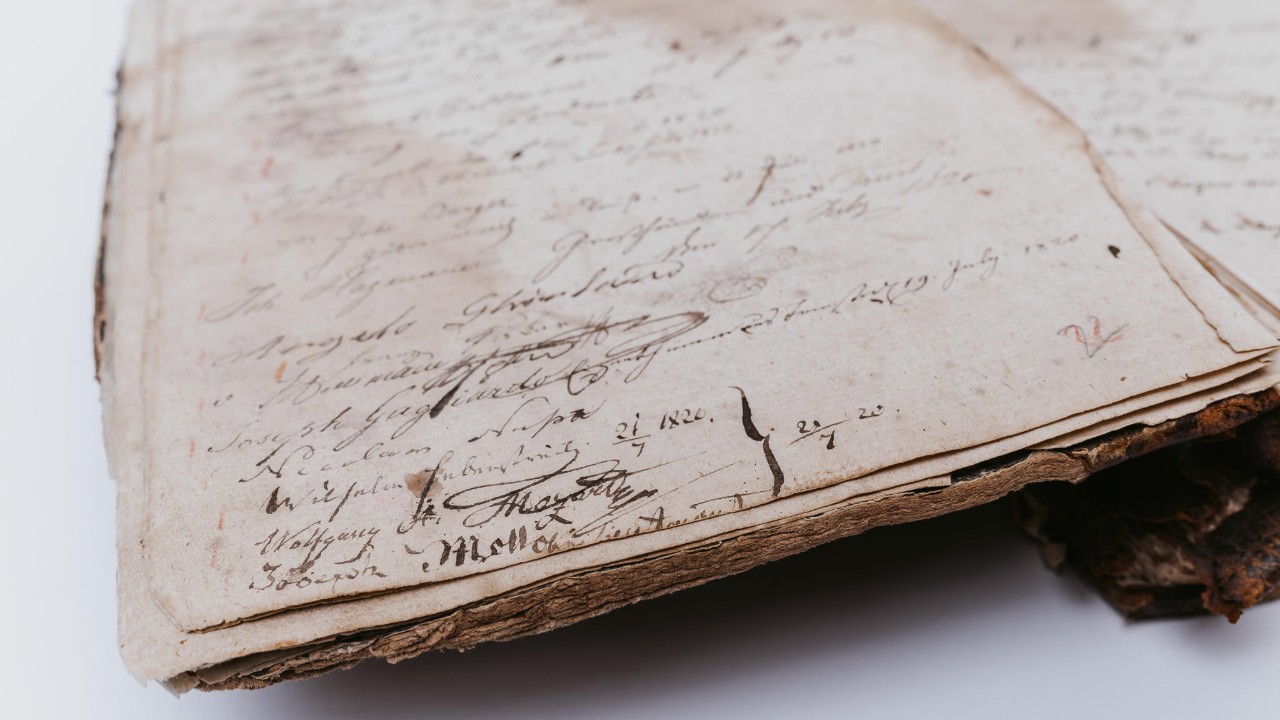

The Development of Tourism
The frequency of signatures went hand in hand with the frequency of tours and the visitors' books clearly show an increase in the number of visitors and tours after the Vienna-Trieste railway line had commenced in 1857. After the initial 107 pages, visitors had to start entering their names and other information in neat columns, which detail their respective first names, surnames, tour dates, places of birth, places of residence and even occupations, which gives a fascinating insight into the society of that time on a global scale. The recorded visitors include military commanders, doctors and even "gentlemen". The first visitors' book was in use until it was filled up in 1834. Throughout the cave's 200-year history, there have so far been a total of thirty-one such books.
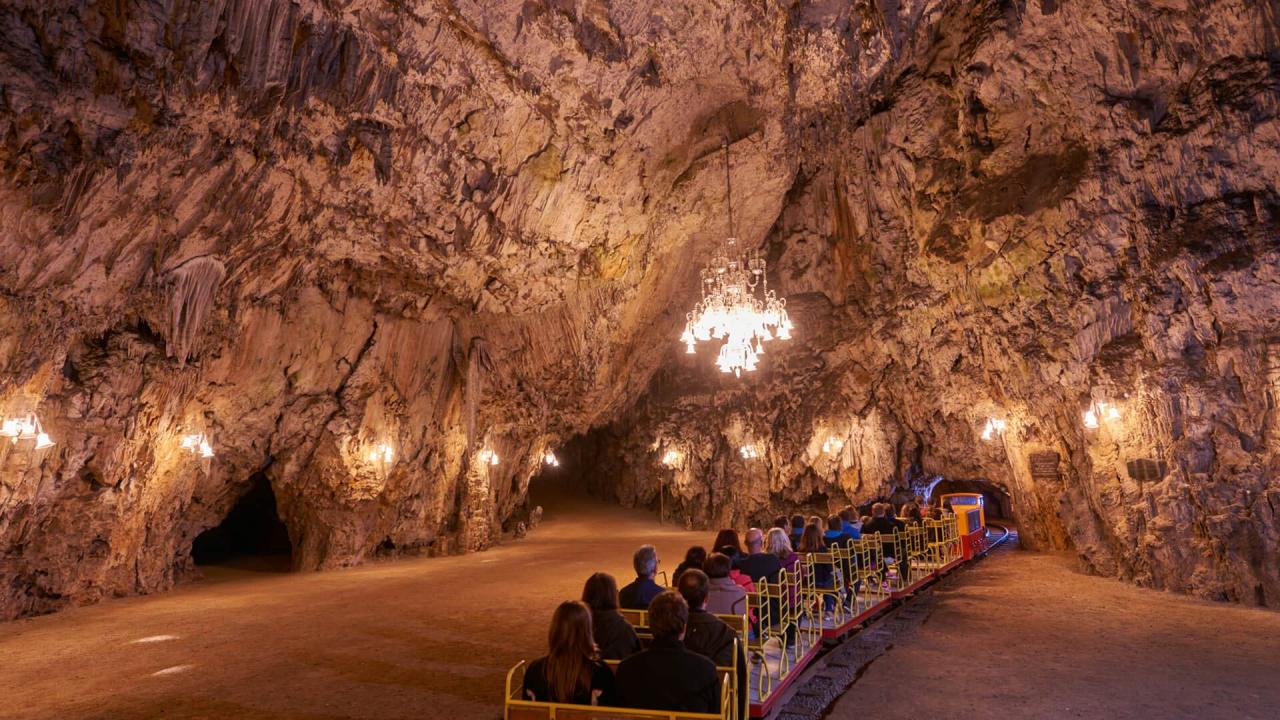

Around the World with A Stop In The Cave
Thomas Cook, the owner of the world's first travel agency, signed the Postojna Cave visitors' book several times. He noted the following: "It is worth making a journey from Venice to Adelsberg to see this wonder of the world." He brought his first group of tourists to the cave on 25 July 1868, describing their visit in the company's promotional brochure. He also mentioned that railway tracks could be laid inside the cave. When he was planning his first round-the-world trip in 1873, he included Postojna Cave in the itinerary. At the time, he wrote the name in the book as "Cook Party". The books and correspondence in the Postojna Cave archives reveal that the cave was part of Cook's tourist agency’s trip itineraries until at least 1914.
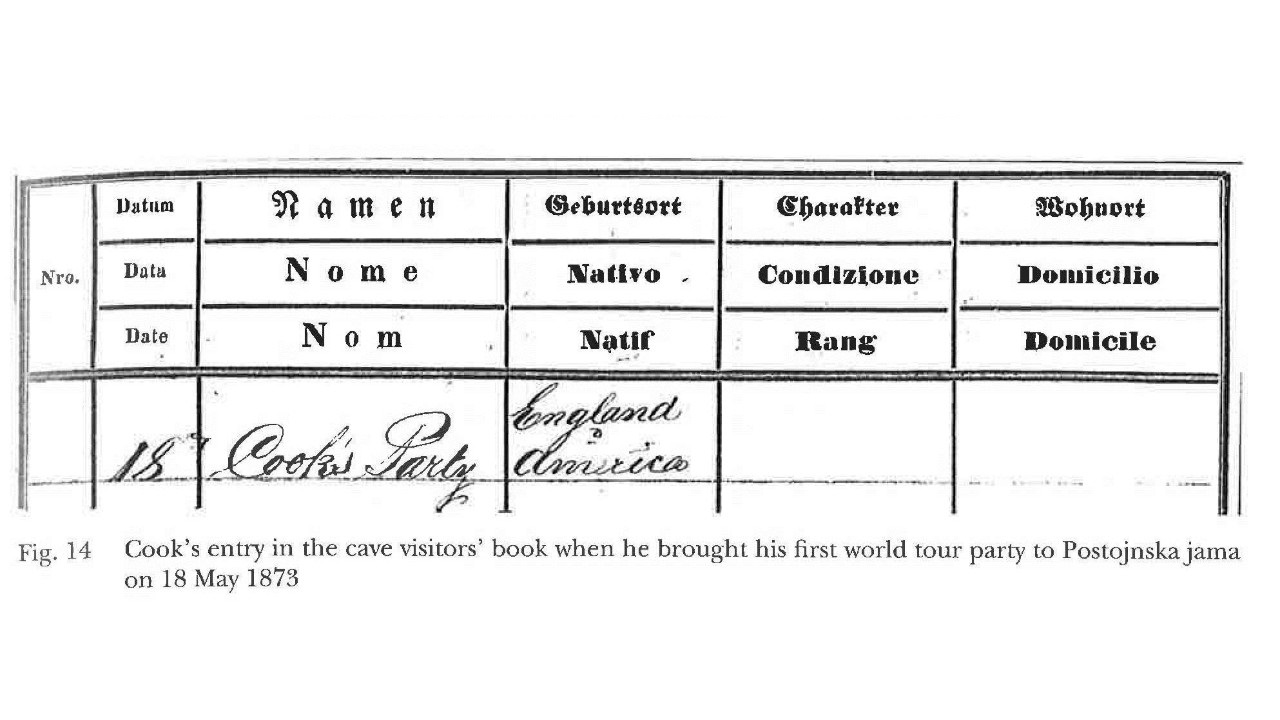

The Golden Book of Visitors
There were so many signatures of noblemen and heirs from all over the world it almost seemed they were competing with one another. Over time, visitors also started noting down their impressions and not only names and dates, and eventually a special column was added especially for this. The first Golden Book of Visitors was introduced in 1857 and the first entry in the book coincided with a visit from the Austrian Emperor Franz Joseph I and Empress Elisabeth (Sisi) on 11 March 1857. The red book was reserved only for the most important visitors and their impressions. Elisabeth, Queen of Romania, noted down that "beneath Earth's surface, the fairy tale is still very much alive". The first red book was in use until 1945. In 2013, the second golden book of famous Postojna Cave visitors was started and is still in use.
39 Million Visitors
Two hundred years from now, this book will also tell a story about the awe-inspiring Postojna Cave to whoever will be carefully leafing through it with white gloves on their hands, wondering about all the people who have visited it over the years… The visitors' books have also allowed us to keep track of the numbers of visitors. During the 200-year history of Postojna Cave tourism, the cave has been visited by over 39 million admirers from all over the world.
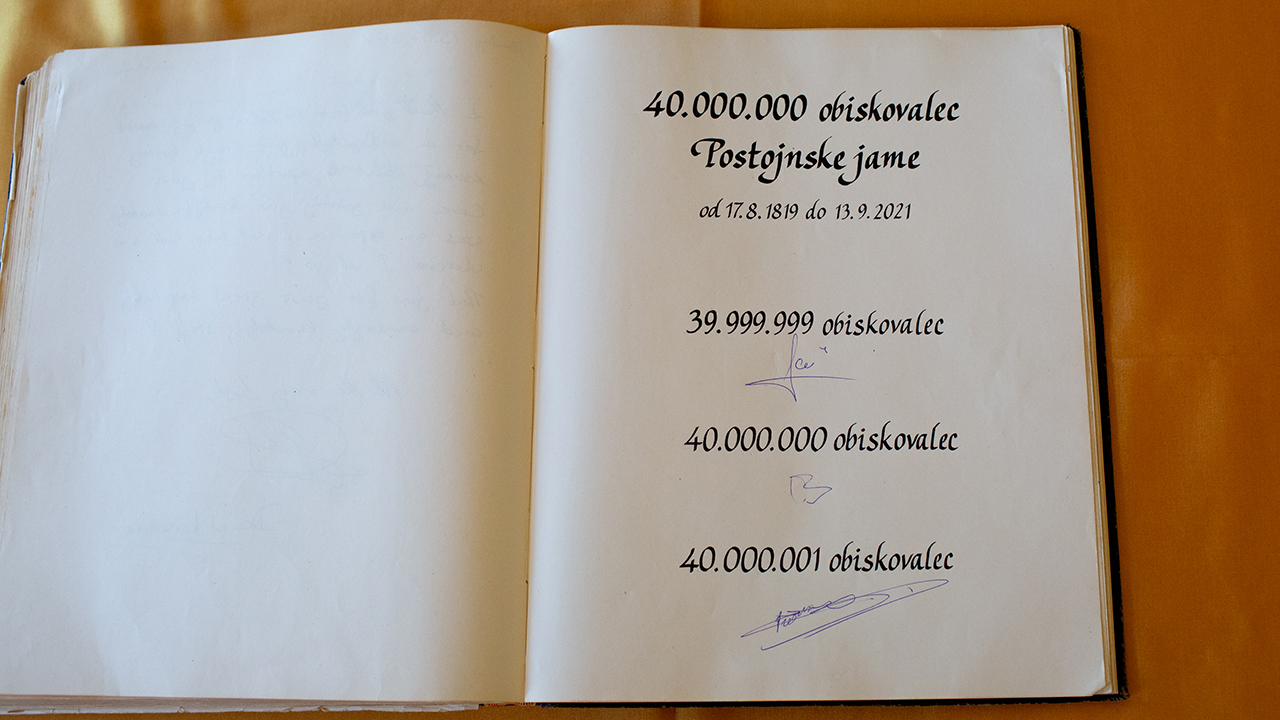



 slovenščina
slovenščina Deutsch
Deutsch italiano
italiano Hrvatski
Hrvatski français
français español
español polski
polski čeština
čeština magyar
magyar Русский
Русский Nederlands
Nederlands Português
Português 한국어 [韓國語]
한국어 [韓國語] 中国的
中国的 日本語
日本語 עברית
עברית